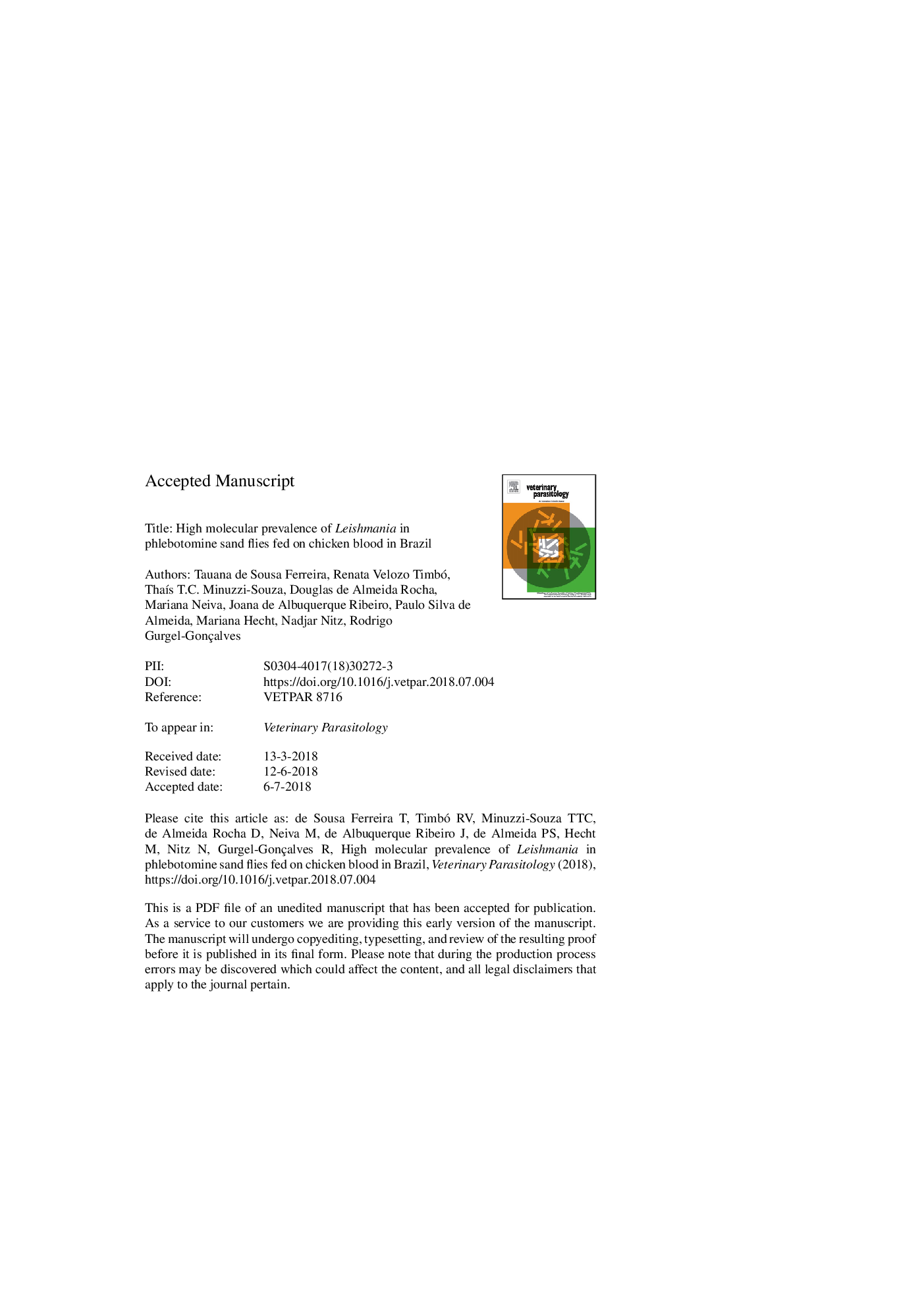| Article ID | Journal | Published Year | Pages | File Type |
|---|---|---|---|---|
| 8505891 | Veterinary Parasitology | 2018 | 25 Pages |
Abstract
Leishmaniases are endemic in Brazil, where Leishmania infantum has been detected in humans, dogs, cats, and phlebotomine vectors. Monitoring synanthropic vector populations is critical for leishmaniasis control-surveillance in such transmission-prone areas. Here, a suite of molecular approaches were used to assess Leishmania infection prevalence and to identify blood-meal sources in a large sample of sand flies collected in anthropic environments of a Leishmania-transmission area in Mato Grosso do Sul State (Rio Verde de Mato Grosso municipality), Central-West Brazil. We sampled sand flies monthly (January-June 2014 and 2016) in one peri-domestic site within each of six neighborhoods with recent records of human visceral and/or tegumentary leishmaniasis. kDNA-qPCR plus rDNA ITS-sequencing were used to detect and identify Leishmania in pooled female sand flies. Individual engorged females (nâ¯=â¯58) were used for blood-meal analyses through High-Resolution Melting (HRM) targeting the mtDNA cytb gene. Overall, 90.5% of 420 CDC trap-nights yielded vectors, for a total catch of 24,989 sand flies. We sub-sampled and identified 3088 sand flies of 12 species, including 2775 Lutzomyia longipalpis (the most abundant species at all sampling sites) and 297 Nyssomyia whitmani. Female sand flies (n = 1261) were grouped in 159 pools, of which 92 Lu. longipalpis (minimum infection rate [MIR] 8%) and 7 Ny. whitmani pools (MIR 7%) were Leishmania kDNA-positive. Most positive Lu. longipalpis were collected in the 2016 rainy season. Sequencing confirmed L. infantum in Lu. longipalpis samples. HRM analyses identified chicken DNA in 57 sand flies (98.3%), 37 of which were Leishmania DNA-positive (64.9%); human blood was found in just one (Leishmania-negative) female. Our data show ongoing risk of L. infantum transmission to humans in the study area, where Leishmania-infected sandfly vectors are common and heavily rely on chicken blood in the peri-domestic environment.
Related Topics
Life Sciences
Agricultural and Biological Sciences
Animal Science and Zoology
Authors
Tauana de Sousa Ferreira, Renata Velôzo Timbó, ThaÃs T.C. Minuzzi-Souza, Douglas de Almeida Rocha, Mariana Neiva, Joana de Albuquerque Ribeiro, Paulo Silva de Almeida, Mariana Hecht, Nadjar Nitz, Rodrigo Gurgel-Gonçalves,
